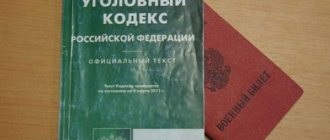What is torture?
This crime is qualified by the provisions of Article 117 of the Criminal Code of the Russian Federation. The indicated norms are applied to determine whether a criminal act has been committed:
- in case of recurrence of physical violence against the same stranger.
- In case of systematic violence within the family, against the spouse, children and other relatives.
- In case of a one-time beating, with multiple intense blows or other types of pain.
REFERENCE: The criminal law characteristics of the crime reflect the infliction of repeated blows or the commission of other prolonged violent acts that cause physical as well as mental pain.
The crime is based on the absence of consequences, which are considered in Articles 112 of the Criminal Code of the Russian Federation (causing harm to health of moderate severity), 111 of the Criminal Code of the Russian Federation (causing serious harm to health).
At the same time, it must be characterized by:
- an intentional act with the intention of causing pain;
- repetition of precedents or intense blows.
It is expressed in beating or other types of infliction of pain, including wringing of hands, section with a belt, tangible pressing of the victim’s body to the ground or other surface.
Torture also includes non-standard and sophisticated forms of inflicting moral or physical pain on the victim.
Repeated beatings are defined as beatings that occurred within a short period – not exceeding one year. It is also taken into account that previous precedents remained unpunished.
We wrote more about torture in the following materials:
- Torture of minors from the point of view of the Criminal Code of the Russian Federation.
- The elements of the crime of torture.
Corpus delicti
The object of the crime is the personality of the victim, the free existence of a person, his right to unhindered interaction with society. This is distorted by gross interference in his personal relationships, leading to moral trauma received by the victim.
Communications with social systems, relationships with other people are disrupted, a person begins to feel fear, moral inferiority, and inferiority.
Here there is not only real harm, but also potential harm that may arise in the form of consequences for the health of the victim.
The objective side of the crime is expressed by the actions of the perpetrator, which are supported by the evidence base of the fact of the commission of the crime. Among them:
- the time and place of the offense, as well as the time and place of previous beatings and other violent actions against the same victims.
- Duration and frequency of strikes, the number of which exceeds two strikes delivered one after the other.
- The intensity of force applied by the perpetrator. Testing pain for victims.
Objective characteristics may also include such deliberate actions as deprivation of water and food. Or keeping the victim in conditions that cause significant mental and physical discomfort.
The subject of the crime is a person over 16 years of age.
Mentally competent, aware that he is committing an intentional unlawful act, expressed in physical or mental violence against another person.
The subjective side of the crime is the motive that caused the precedent to arise.
Torture is especially often a form of interaction between members of families with a low level of culture.
The motives for torture here are distorted ideas about education, including those based on morally outdated traditions of cutting children with a belt or whip. Often arise out of jealousy towards wives or cohabitants.
The population of the husband in relation to the wife has its own characteristics. We talked about where and how to film a husband beating him and what the punishment would be for beating his wife. Check them out if this is your situation.
Another common motive is a street fight and the common tendency among teenagers to dominate, humiliating, and forcibly subjugating the weaker.
Sometimes such actions are accompanied by extortion or committed for other hooligan reasons.
REFERENCE: Mostly a guilty act is committed in a state of alcoholic intoxication or intentional toxic, narcotic or other poisoning. These circumstances increase responsibility and may require additional qualifications.
If the victim provokes torture by deliberately immoral behavior, the responsibility of the perpetrator may be reduced.
Read more about the elements of the crime of “Battery” here.
The difference between beating and torture
Article 116. Battery (according to the Criminal Code of the Russian Federation)
1. Battering or committing other violent acts that caused physical pain, but did not entail the consequences specified in Article 115 of this Code, is punishable by a fine in the amount of up to forty thousand rubles or in the amount of the wages or other income of the convicted person for a period of up to three months, or compulsory labor for a term of up to three hundred and sixty hours, or correctional labor for a term of up to six months, or arrest for a term of up to three months.
2. The same acts committed:
a) for hooligan reasons;
b) for reasons of political, ideological, racial, national or religious hatred or enmity, or for reasons of hatred or enmity towards any social group - shall be punished by compulsory labor for a term of up to three hundred and sixty hours, or by correctional labor for a term of up to one year, or restriction of freedom for a term of up to two years, or forced labor for a term of up to two years, or arrest for a term of up to six months, or imprisonment for a term of up to two years.
The object of a criminal attack is health and in the strict sense of the word is not only health, but a wider range of relationships - the bodily integrity of the individual. The composition is formal. The act is completed from the moment the action is completed.
The actions included in the objective side are broader than the title of the article suggests. These include:
a) assault
b) committing other violent acts.
Batterings characterized by repeated blows (at least three) do not constitute a special type of injury; in some cases they act as a method of action and causing harm (for example, causing minor harm to health, torture, hooliganism), in others - as independent criminal acts of behavior punishable under Art. 115.
A beating may leave marks on the victim’s body (abrasions, scratches, bruises, small wounds, etc.) and may not leave any visible damage. If traces are left, there is damage, they are recorded by an expert. He describes them, notes the nature of the damage, their location, signs of age, indicating the properties of the object that caused them, and the mechanism of formation. However, these injuries are not classified as harm to health and their severity is not determined.
If the beatings do not leave behind objective traces, then the expert report notes the victim’s complaints, including during palpation of certain parts of the body, as well as the absence of objective signs of damage. The severity of harm to health is also not determined. In such cases, the establishment of the fact of beatings is carried out by the preliminary investigation authorities, the prosecutor and the court on the basis of non-medical data.
In addition to beatings under Art. 116, the commission of other violent acts is also punishable. These may include wringing and twisting of hands, pinching, squeezing body parts, tying, pinching skin, tearing out clumps of hair, etc.
Just like beatings, other violent actions receive a criminal legal assessment under Article 116 if two conditions are met:
a) they did not entail the consequences specified in Art. 115, i.e. minor (and even more so moderate or severe) harm to health;
b) they caused physical pain to the victim. Physical pain can also be accompanied by mental experiences and suffering, but a mandatory sign is the infliction of physical pain by violent actions. Therefore, if such pain is not caused to a person loosely tied with a rope, or only a mental impact is exerted on the victim, then Art. 115 is not applicable.
In addition to the possibility of exemption from criminal justice in this category of cases on the basis of active repentance and in connection with reconciliation with the victim, it is necessary to remember the provisions of insignificant actions (for example, in isolated acts of pinching, wringing of hands).
Beatings as repeated blows should be distinguished from torture committed through systematic beatings (Article 117): in the latter case we are talking about several acts of beating, separated in time. Battery, as an independent type of crime, presupposes a coincidence in time of blows inflicted on the victim.
The subjective side of the crime is characterized by an intentional form of guilt (direct or indirect intent). The crime is committed with direct intent: the perpetrator is aware of the social danger of repeated blows or the use of other violent actions, foresees the possibility or inevitability that they will cause physical pain to the victim, and desires this.
Qualified types:
a) for hooligan reasons;
b) for reasons of political, ideological, racial, national or religious hatred or enmity, or for reasons of hatred or enmity towards any social group,
The acts fall into the category of crimes of minor gravity.
The subject is a general, sane person who has reached the age of 16.
Article 117. Torture (according to the Criminal Code of the Russian Federation)
1. Infliction of physical or mental suffering through systematic beatings or other violent actions, if this did not entail the consequences specified in Articles 111 and 112 of this Code, -
shall be punishable by restriction of freedom for a term of up to three years, or forced labor for a term of up to three years, or imprisonment for the same term.
2. The same act committed:
a) in relation to two or more persons;
b) in relation to a person or his relatives in connection with the performance of official activities by this person or the performance of public duty;
c) in relation to a woman who is known to the perpetrator to be pregnant;
d) in relation to a person who is known to be a minor or a person who is known to be in a helpless state or in financial or other dependence on the offender, as well as a person who has been kidnapped or taken as a hostage;
e) using torture;
f) by a group of persons, a group of persons by prior conspiracy or an organized group;
g) for hire;
h) for reasons of political, ideological, racial, national or religious hatred or enmity, or for reasons of hatred or enmity towards any social group, -
shall be punished by imprisonment for a term of three to seven years.
Note. , torture is understood as the infliction of physical or mental suffering for the purpose of forcing a person to testify or take other actions contrary to the will of a person, as well as for the purpose of punishment or other purposes.
The object is human health. The subject is a general, sane person who has reached the age of 16. The composition is formal.
The crime is described in the law using negative and positive characteristics. Article 117 applies if the act described therein did not entail the consequences specified in Art. Art. 111 and 112. This means that this article covers the infliction of minor harm to health by torture and in this case additional qualifications under Art. 115 is not required. If the act resulted in intentionally caused serious or moderate harm to health, then, on the contrary, Art. 117. In this case, torture is considered as a method of causing such harm and a qualifying circumstance (Article 112).
Objective signs specified in Art. 117, characterize the objective side of torture, which consists of systematic beatings or other violent actions that cause physical or mental suffering.
Comparison of dispositions of Art. Art. 116 and 117 shows that the methods of action in the acts described therein are similar. They are:
a) beatings;
b) other violent actions.
The difference is that torture is expressed in systematic beatings, i.e. striking more than twice. In this case, not only the formal, quantitative characteristic (how many times) is important, but also the intensity of the impact on the victim, the latter’s perception of multiple acts as something incessant, continuous, permanent. Because of this, such acts should not be significantly distant from each other in time. Repeated beatings cannot be considered as torture if, for one or more episodes that provide grounds for qualifying the actions as systematic, the statute of limitations for bringing the authorities to justice has expired or the person for these actions has previously been subject to administrative penalties and decisions on the application of such measures have not been cancelled.
Other violent actions as the second method of torture textually coincide with those named as part of beatings (Article 116). However, their content in Art. Art. 116 and 117 are not equivalent. When tortured, they mean other violent actions (in addition to systematic beatings), such as: prolonged infliction of pain (pinching, cutting, etc.), infliction of multiple injuries (including small ones, with blunt or sharp objects), exposure to thermal factors (for example, burning with a hot iron), other similar actions, including prolonged deprivation of water, food, heat, hanging upside down, flogging, etc. As you can see, other violent actions during torture in quantitative and qualitative terms (repetition, duration) differ markedly from those specified in Art. 116.
The second part, constituting the objective side of torture, is physical or mental suffering, which must be causally caused by systematic beatings or other violent actions, and arise from them. Torture is characterized by the suffering of the victim, i.e. physical and mental experiences.
In contrast to one-time physical pain (Article 116), suffering as a human condition has an extension over time, since beatings are inflicted systematically, renewing, reinforcing and intensifying experiences; other violent actions also imply not the simultaneity of violence, but repetition and some of its extent and duration.
The subjective side of torture is expressed in direct intent. The perpetrator carries out violent acts, realizing that they cause physical or mental suffering to the victim, and desires this
Qualified species are listed in Part 2.
It is necessary to describe in detail paragraph “d” of Part 2 - the commission of a crime against a known minor or a person who is known to the perpetrator to be in a helpless state or in financial or other dependence on the perpetrator, as well as a person who has been kidnapped or taken as a hostage. Torture of a known minor involves the commission of the specified actions in relation to a person under the age of 18. The last circumstance must be known to the perpetrator. The source of knowledge does not matter for the qualification of the crime. The financial dependence of the victim is understood as his being fully or partially dependent on the perpetrator, the presence of debt obligations. A person is recognized as kidnapped if he is openly or secretly captured at his place of residence, displaced against his will, and forcibly held in another place. A hostage is a person captured and (or) held for the purpose of compelling the state, organization or individuals to commit any action or refrain from committing them as a condition for the release of the hostage.
The crime provided for in Part 1 belongs to the category of moderate gravity, and Part 2 - to serious crimes.
Criminal legal characteristics
Regarding these types of crimes, general trends can be identified that act as qualifications for the crime, with the aggravation of the preventive measure.
These include:
- acts committed against minors (minors) who are obviously incapable of self-defense, as well as pregnant women.
- Acts committed against two or more citizens.
- Directed towards persons performing official or official functions.
- Committed by a group of offenders, especially in the presence of national, religious or political hostility towards the victim of violence.
When qualifying, the perpetrator must be aware of the minor age of the victim, as well as the state of the woman’s pregnancy.
For the crime of “Torture”, additional qualifications are provided if it is committed:
- using torture;
- for hire;
- to commit other, more serious crimes.
IMPORTANT: When committing more serious crimes, suppression in the form of determining the penalty involves qualification under a combination of two or more articles.
If damage to health of moderate severity has been caused or serious bodily injury has been inflicted, then Article 117 of the Criminal Code of the Russian Federation is canceled, laconically included in the context of criminal legislation, which refers to crimes against human health.
Similarities and differences
When determining the qualification “Torture”, the effect of Articles 115, 116 of the Criminal Code of the Russian Federation, which characterize beatings and causing minor harm to the health of the injured person, is canceled.
Since torture includes, among other things, striking and beating. It also deliberately provides for criminal liability for causing minor harm to health.
These types are similar in the object and subject of the crime. A guilty act is committed with intent, based on a deliberate desire to cause pain, to morally humiliate the victim.
The motives that caused this desire may also be similar. But here we distinguish the corresponding nuances of both an objective and subjective nature:
- Unlike beatings, torture is a longer duration of violent influence on the victim’s body. Here, certain time periods are also allowed, not exceeding one year.
- The intensity of the blow may be similar in strength, but beating during torture is distinguished by a series of continuously applied blows.
- If during beating the victim receives some respite from the experience of pain, then torture is distinguished by incessant torment. It is the degree of painful experiences that determines the qualification of Article 117 of the Criminal Code of the Russian Federation.
- Battering primarily involves beating, which is how it differs from torture. And when torturing, other types of inflicting physical and mental pain are taken into account.
ATTENTION: In case of torture, the measure of criminal liability for the crime is much stricter than in case of beating. There is also no provision for administrative liability.
Distinction from other crimes
As discussed above, it is necessary to distinguish torture from beatings, as well as from crimes against human health, which can occur in the form of consequences of varying degrees of severity, which is subject to consideration in accordance with the provisions of Articles 115, 112, 111 of the Criminal Code of the Russian Federation.
You should also pay attention to the following unlawful guilty acts, which cannot be identified with torture:
- State of passion of the perpetrator (Article 113 of the Criminal Code of the Russian Federation).
- Causing harm to health through negligence (Article 118 of the Criminal Code of the Russian Federation).
- Excess of self-defense (Article 37 of the Criminal Code of the Russian Federation).
If the perpetrator was previously brought to administrative responsibility (Article 6.1.1 of the Code of Administrative Offenses of the Russian Federation), then a new beating of the same person cannot be considered torture, except in cases provided for by criminal law.
Responsibility will again arise for beatings, but administrative measures will be unacceptable, responsibility will become criminal in nature.
Features of qualification of causing harm to health
Among crimes against the person, attacks on human health are related in importance to crimes against life and are combined with them in one chapter.
16 of the Criminal Code. The object of the crimes provided for in Art. Art. 111 - 125 of the Criminal Code, is health as the actual state of the human body at the time of the commission of a crime. The criminal law protects the health of every person from criminal attacks, regardless of his age, vitality, or illness. The child’s health may be the object of attack already during the birth process.
A health crime can be defined as the unlawful, intentional or reckless infliction of harm to the health of another person. Lawful infliction of harm to the victim’s health (in necessary defense, extreme necessity, etc.) cannot be considered a crime against health.
The subjective side of the crimes provided for in Art. Art. 111 - 117 of the Criminal Code, characterized by direct or indirect intent. For careless infliction of grievous bodily harm, liability arises under Art. 118 CC. For intentional infliction of harm to health, the most typical is unspecified intent, when the perpetrator foresees and desires or consciously allows harm to the health of another person, but does not specifically imagine the scope of this harm and is often deprived of the opportunity to specify the severity of the harm caused to health. The qualification of an act with unspecified intent is determined depending on the actual consequences, since the intent of the perpetrator included causing any harm to health. With direct, specific intent, liability must arise for the harm to health that was covered by the intent of the perpetrator.
The subject of causing harm to health is a sane individual who has reached 14 years of age in some cases (Articles 111, 112 of the Criminal Code), and 16 years of age in others (Articles 113 - 118 of the Criminal Code).





